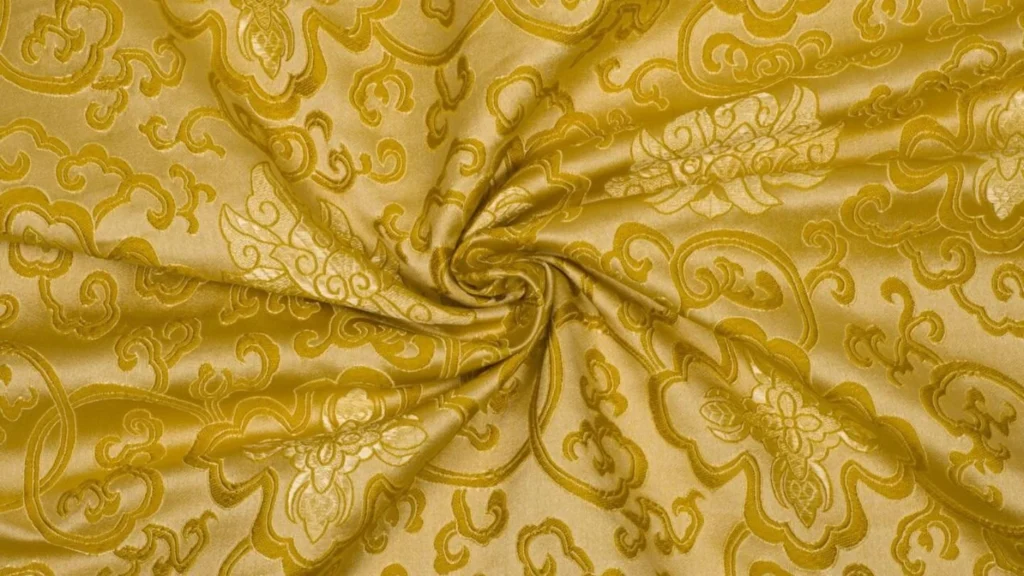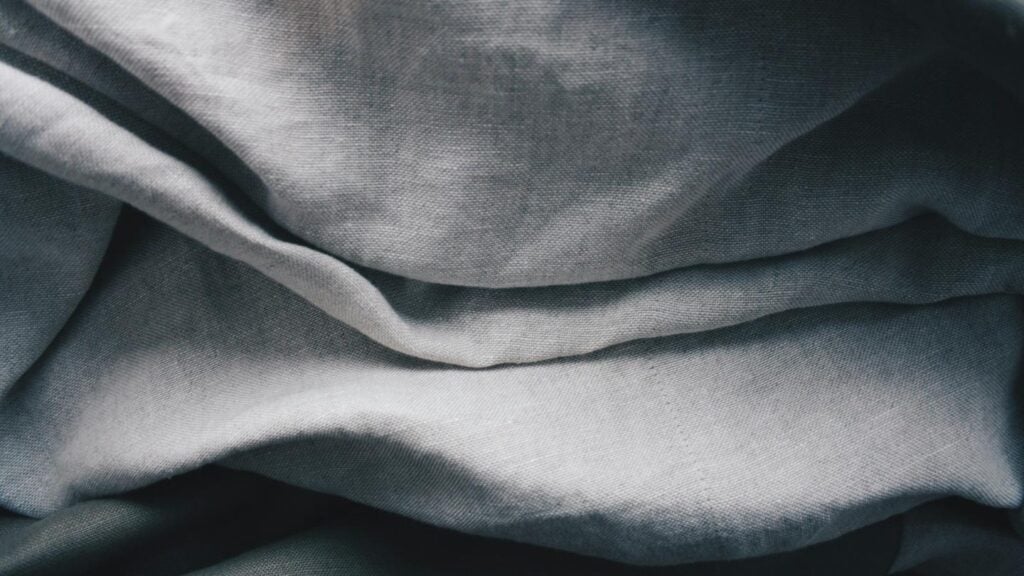2 – Neoprene Fabric Composition
3 – Neoprene Fabric vs Other Fabrics
4 – How Neoprene Fabric Is Manufactured
5 – Common Uses in Fashion
6 – Understanding the Environmental Impact of Neoprene Fabric
7 – Exploring Price Points and Value for Money
8 – Conclusion
9 – FAQs
What is Neoprene Fabric?
Neoprene fabric is a synthetic rubber material known for its flexibility, durability, and resilience. It was first developed in the 1930s by DuPont as an alternative to natural rubber. Neoprene is a type of polychloroprene, a material created by polymerizing chloroprene, which gives it its distinctive properties. Unlike many other fabrics, Neoprene is designed to be water-resistant, making it ideal for use in wetsuits, gloves, and various water-related applications. It is commonly recognized for its smooth, spongy texture and ability to provide thermal insulation.

Key Features of Neoprene Fabric
- Flexibility and Stretch: Neoprene is inherently stretchy, allowing it to fit snugly around the body without restricting movement, making it ideal for activewear and athletic garments.
- Water Resistance: Its closed-cell structure helps resist water absorption, which is why it’s popular in products exposed to moisture, like wetsuits and diving gear.
- Thermal Insulation: Neoprene provides excellent insulation, keeping the wearer warm in cold environments by trapping air within the fabric.
- Durability: The material is highly durable, resistant to abrasions, oils, and weathering, which makes it suitable for both outdoor and industrial applications.
Neoprene’s unique combination of qualities has led to its widespread use not only in fashion and sportswear but also in industries like automotive, healthcare, and construction, where its insulating and protective properties are highly valued.
Neoprene Fabric Composition
Neoprene fabric is made from polychloroprene, a synthetic polymer that is produced through the polymerization of chloroprene, a type of organic compound. The composition of Neoprene gives it its unique characteristics of flexibility, water resistance, and thermal insulation. Understanding the composition of Neoprene fabric helps explain why it is so versatile in various applications.
- Chloroprene Polymerization
The core component of Neoprene is chloroprene, a liquid chemical that undergoes a polymerization process to form a solid, rubbery substance. This process links chloroprene molecules together, creating long chains of polymers that give Neoprene its flexibility and resilience.
- Closed-Cell Structure
Neoprene fabric is typically made with a closed-cell structure, where tiny pockets of air are trapped inside the material. This structure provides thermal insulation and buoyancy, which is why Neoprene is used in wetsuits and diving gear. The closed-cell nature also contributes to Neoprene’s water resistance, as the fabric doesn’t easily absorb moisture.
- Additives for Enhanced Performance
To further enhance Neoprene’s qualities, various additives can be incorporated during the production process. These additives might include fire retardants, UV stabilizers, and antioxidants, which improve the fabric’s durability, UV resistance, and ability to withstand harsh environmental conditions.
- Blends and Variations
While pure Neoprene is made from chloroprene, blended versions of Neoprene fabric may include cotton, nylon, or polyester to improve texture, strength, or ease of handling. These blends can provide additional properties, such as increased stretchability, lightweight feel, or enhanced comfort, making Neoprene suitable for a wide range of applications beyond wetsuits.

The composition of Neoprene fabric—its synthetic polymer base, closed-cell structure, and added performance-enhancing additives—explains why it is so versatile. From sportswear to industrial applications, Neoprene offers unique qualities that other fabrics simply cannot replicate.
Neoprene Fabric vs Other Fabrics
When comparing Neoprene fabric to other materials, its unique properties—such as flexibility, water resistance, and thermal insulation—make it stand out. While it shares some qualities with other fabrics, it also has distinct advantages and limitations. Here’s how Neoprene stacks up against other commonly used fabrics:
Neoprene vs. Rubber
- Material Composition: Both Neoprene and rubber are synthetic materials, but Neoprene is specifically made from chloroprene, while rubber is often derived from latex or other natural and synthetic compounds.
- Durability: Neoprene is more weather-resistant and performs better under exposure to UV rays and harsh environments, whereas rubber may degrade more quickly in these conditions.
- Flexibility: While both materials are flexible, Neoprene tends to be more comfortable and lightweight compared to rubber, which is stiffer and heavier.
Neoprene vs. Spandex
- Stretch and Fit: Both Neoprene and spandex offer stretchability, but spandex is more elastic and provides a tighter, more form-fitting feel. Neoprene, on the other hand, provides more structure and insulation while still offering flexibility.
- Water Resistance: Neoprene outperforms spandex in terms of water resistance and thermal insulation, making it the better choice for wetsuits and water-related garments.
- Durability: Neoprene is typically more durable and resistant to wear, UV rays, and abrasion than spandex, which may lose its elasticity and structure over time.
Neoprene vs. Polyester
- Breathability and Comfort: Polyester is breathable and moisture-wicking, making it ideal for activewear and sports fabrics. However, Neoprene offers better thermal insulation and water resistance, making it more suitable for cold and wet environments.
- Durability and Maintenance: Neoprene is more abrasion-resistant and long-lasting than polyester, which can wear out more quickly. Neoprene is also easier to maintain when used in wetsuits or protective gear, while polyester may require more frequent washing.
Neoprene vs. Nylon
- Strength and Flexibility: Nylon is lightweight and strong, but Neoprene offers more structural support and insulation, making it ideal for specialized uses like sportswear and protective gear.
- Water Resistance: Neoprene is far more water-resistant than nylon, which tends to absorb moisture. This makes Neoprene the preferred choice for wet conditions and waterproof clothing.
Neoprene vs. Cotton
- Breathability and Comfort: Cotton is known for its breathability and soft feel, making it ideal for summer wear and everyday clothing. However, Neoprene offers better insulation and resistance to the elements.
- Environmental Impact: While cotton is a natural, biodegradable fabric, Neoprene—especially synthetic versions—can have a higher environmental impact due to its petroleum-based production process. However, Neoprene fabrics can be more durable and last longer, reducing the need for frequent replacements

How Neoprene Fabric Is Manufactured
Neoprene fabric is made through several key steps, turning chloroprene into a durable, flexible material:
- Polymerization of Chloroprene:
Chloroprene is polymerized into polychloroprene, giving Neoprene its rubber-like properties. - Blending with Additives:
To enhance performance, Neoprene is blended with fillers, plasticizers, and stabilizers. For foam Neoprene, blowing agents are added to create air pockets for insulation. - Lamination:
Neoprene is laminated to nylon or polyester fabrics for added durability and flexibility, commonly used in wetsuits and activewear. - Shaping and Cutting:
The Neoprene is shaped into sheets or rolls, with thickness adjusted for different uses, from wetsuits to flexible garments. - Curing and Drying:
The material is heated to set the polymer, ensuring durability and resistance to wear. It is then cooled and dried before final use.

Produce your fashion collection with us
Common Uses in Fashion
Neoprene fabric’s durability, flexibility, and water-resistant properties make it a popular choice in various fashion applications. While it was originally designed for industrial and sports use, Neoprene has found a strong presence in both high fashion and everyday wear. Here are the most common uses of Neoprene in fashion:
- Wetsuits and Sportswear
Neoprene is most widely recognized for its use in wetsuits, dive gear, and other water sports apparel. Its ability to provide thermal insulation and its resistance to water absorption make it ideal for swimming, surfing, and diving.
- Athleisure and Activewear
Neoprene is increasingly used in athleisure wear, such as leggings, sports bras, and jackets. The fabric’s stretchability and comfort, combined with its sleek look, make it popular in trendy activewear collections.
- Fashion Outerwear
Neoprene has become a favorite for structured coats, jackets, and blazers. Its ability to hold shape while offering comfort and flexibility has made it a popular material in contemporary fashion, especially in high-fashion collections.
- Footwear
Neoprene is often used in shoes and boots, especially for designs that need water resistance or flexible, breathable materials. Its flexibility and strength make it ideal for modern sneakers, boots, and athletic shoes.
- Bags and Accessories
Neoprene’s light weight, durability, and water resistance also make it ideal for fashion accessories. From handbags to backpacks, Neoprene provides a contemporary look with practical, everyday functionality.
- Evening and Structured Fashion
Neoprene’s structure and ability to maintain shape have led to its use in evening wear and formal dresses. Designers use it for structured gowns, cocktail dresses, and other elegant pieces where form and flexibility are key.

Neoprene fabric is widely used in fashion, especially for athleisure, outerwear, swimwear, and accessories. Its unique combination of flexibility, durability, and water resistance makes it a versatile and stylish fabric that blends performance with fashion.
Understanding the Environmental Impact of Neoprene Fabric
While Neoprene fabric offers durability and versatility, its environmental impact is a concern due to its petroleum-based composition and non-biodegradability. Here are key points to consider:
- Manufacturing Process: Neoprene production involves energy use and chemicals, which contribute to emissions.
- Non-Biodegradable: Neoprene does not break down naturally, contributing to landfill waste. Its synthetic nature makes it less sustainable than natural fibers.
- Recycling Challenges: Neoprene is difficult to recycle due to its complex structure. However, some companies now use recycled Neoprene in their products.
- Energy and Water Use: Neoprene production requires significant energy and water, but sustainable production techniques are helping reduce these inputs.
- Eco-Friendly Alternatives: The rise of bio-based Neoprene and natural rubber alternatives offers more sustainable options for the future. .
Exploring Price Points and Value for Money
Neoprene fabric varies in price based on quality, thickness, and production methods:
- Standard Neoprene ranges from €10 to €30 per meter, while high-quality Neoprene can cost €30 to €60 per meter.
- Eco-friendly Neoprene may be slightly more expensive due to advanced production processes.
Value for money:
- Durability: Neoprene is long-lasting and resistant to water and UV, offering savings over time.
- Insulation & Flexibility: Ideal for high-performance wear like wetsuits and activewear, it justifies its higher cost.
- Versatility: Used in fashion, sportswear, and protective gear, Neoprene provides strong value across industries.

Neoprene’s higher price is balanced by its durability, insulation, and versatility, making it a worthwhile investment for specialized uses.
Conclusion
Neoprene fabric is durable, flexible, and water-resistant, making it a great choice for sportswear, fashion, and protective gear. Although it can be pricier than other fabrics, its long-lasting performance and versatility make it a worthwhile investment. As eco-friendly options improve, Neoprene continues to offer both high performance and sustainability.
FAQs
- What is Neoprene fabric?
Neoprene fabric is a synthetic rubber material known for its flexibility, water resistance, and insulation properties. It’s commonly used in wetsuits, activewear, and protective gear.
- Where does Neoprene fabric come from?
Neoprene is made from chloroprene, a chemical compound polymerized to form the fabric. It was first developed in the 1930s by DuPont.
- What are the key properties of Neoprene fabric?
Neoprene is flexible, water-resistant, insulating, and durable, making it ideal for sportswear, outdoor gear, and protective clothing.
- How is Neoprene fabric made?
Neoprene is created by polymerizing chloroprene into polychloroprene, which is then processed and laminated with other materials for added flexibility and durability.
- Why is Neoprene fabric so expensive?
Neoprene’s price reflects its specialized production process, durability, and versatile applications in high-performance and luxury items.
- Is Neoprene fabric eco-friendly?
Traditional Neoprene is synthetic and not biodegradable, but eco-friendly versions, made with recycled materials or bio-based rubbers, are becoming more available.
- Can Neoprene fabric be recycled?
Recycling Neoprene can be challenging due to its composition, but some companies are working on systems to recycle wetsuits and other Neoprene-based products.
- How do I care for Neoprene fabric?
Neoprene should be cleaned gently, usually with cold water and mild detergent. Avoid using high heat for drying or ironing, as this can damage the fabric.
- What are the best uses for Neoprene fabric?
Neoprene is perfect for wetsuits, sportswear, activewear, protective gear, and fashion accessories due to its durability and flexibility.
- Can Neoprene fabric be used for everyday clothing?
Yes, Neoprene is increasingly used for structured fashion such as dresses, jackets, and coats, especially in modern, sculptural designs.







